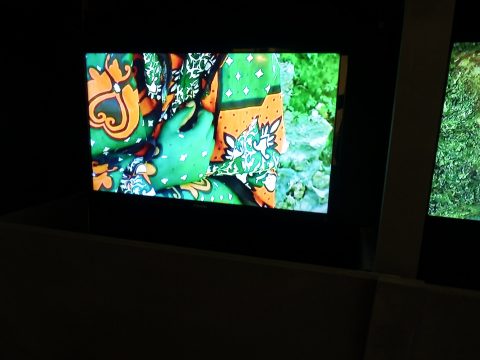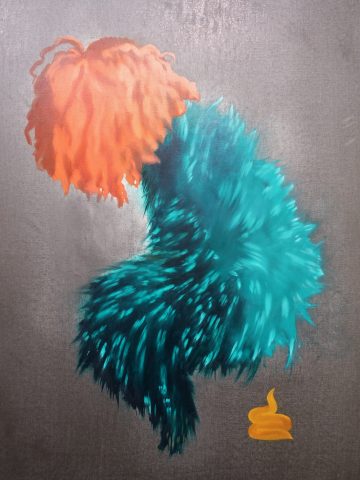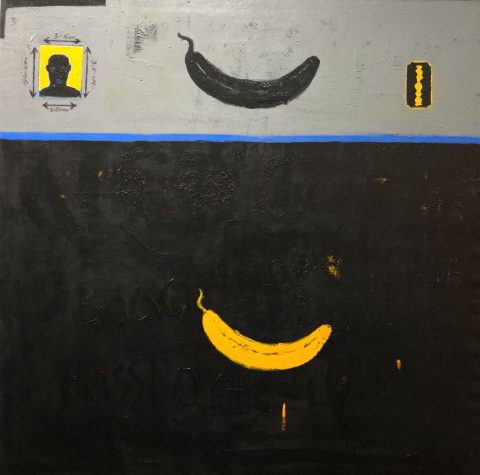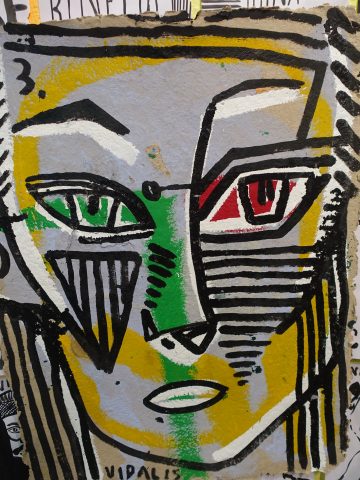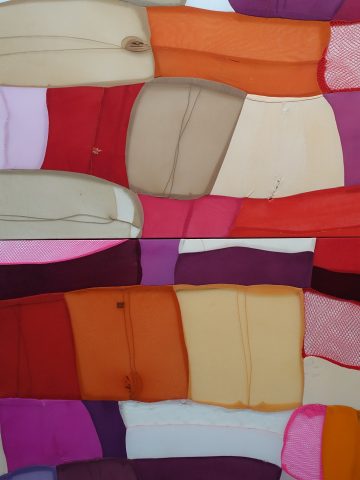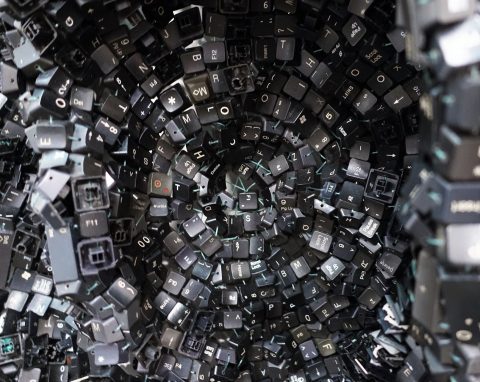Why is African art at the Armory Show so friendly and welcoming?
- Ato Malinda, Prison sex II, video, stills and performance, 2008. At Circle Art gallery.
- Nengi Omuku, Roadside Dump, 2016, oil on canvas. At Omenka Gallery.
- Emanuel Tagene, Black Passport, 2015. At Addis Fine Art.
- Francisco Vidal, instalation, detail, 2016. At Tiwani Contemporary.
- Turiya Magadlela, detail, 2016. At Blank.
- Moffat Tikadiwa, Printed modernity, 2016, laptop and computer keys. At Whatiftheworld.
It has taken 8 months to curators Julia Grosse and Yvette Mutumba to select the 13 galleries participating in the section that the Armory Show dedicates this year to Africa and African Diaspora. But now they should be proud of their job, and thanks to the great exposure the fair is providing to this still young and energetic region of A(r)tlantis it seems easy to predict that in the short period African artists will receive a lot of attention.
As stated by Julia and Yvette, who founded Contemporary And (C&) in 2013, “our intention was to fill in some of the details – the nuances, the exceptions and the emerging voices – that create and challenge an understanding of contemporary art from African perspectives.” And that really seems to be the best approach to start looking into the idea of African art represented at the Armory this year. Among the 14 selected galleries, 7 are based on the continent (Cape Town, Nairobi, Lagos, Abidjan) while the others are in London, Paris, and Berlin. Differently from what happened almost ten years ago with the geographically oriented new wave of Chinese contemporary art, the new art from Africa is strictly related to the African diaspora, a complex historical phenomenon that is still changing the boundaries of the continent.
“There isn’t much infrastructure yet, but the local art community is vibrant and the base of collector is rapidly growing” told Cfa Danda Jaroljmek, director and founder of Circle Art Agency, a Nairobi-based contemporary art gallery that represents artists from across the region – Uganda, Etiopia, Sudan and Tanzania. “Every year we organize an auction – she continues -, it helps to build up the local market and to create our own audience”. Among the main African contemporary art collectors she mentions Sindika Dokolo, but her gallery can count on supportive foreigner collectors too. “They are generally people with business interests in the area” says Jaroljmek. People such as Robert Devereux, from London, who is also the director and founder of the African Arts Trust, a charity trust in support of contemporary art of which Jaroljmek, who has been living in Nairobi for 25 years, is the administrator.
At the Armory Show Circle Art Gallery is presenting a solo booth dedicated to Ato Malinda. The artist was born in Kenya in 1981, but she studied Art History and Molecular Biology at the University of Texas in Austin and has a MFA from Transart Intitute in New York. She is currently based in Rotterdam. Her three-channel video titled “Prison Sex II” relates the story of a woman who, according to a local law, has to spent six months in prison in order to divorce from her husband. “It’s sad – she comments – that a woman has to accept to be imprisoned to get free”.
“Initially – says Jaroljmek – African artists were influenced by local schools, which generally drove them towards traditional arts. At that time they were painting or sculpting for a Western audience. But things have changed. People are becoming better informed about art, the new upper-middle class Kenyan art collectors are more and more supportive, and artists are finally doing what they want to do. So it is difficult, at the moment, to spot common characteristics in their art practices. On the contrary, I would say that there is an extraordinary variety of voices and positions”. That is precisely how this fair’s section looks like, even if, according to Nigerian curator Oliver Enwonwu from Omenka Gallery (Lagos, Nigeria), some common elements could actually be pinpointed. “For instance – he told Cfa – I would mention some topics like colonialism, cultural identity, or politics, but also visual features such as vibrant colours, recycled materials and textiles”. Among the main Nigerian collectors he mentions Joe Obiago, the Prince Yemisi Shyllon, and Mairo Bashir. At the Armory Show Omenka gallery is presenting paintings by Nengi Omuku, who also hasn’t been educated in Africa, but is currently based in Nigeria . Born 1987, she got her MA at the Slade School of Art in London. Enwonwu reads her current colourful and semi-abstract paintings as a way to express “difference, understanding and mutual belonging”.
Henon Girma studied Visual Art Administration at the New York University. She works at Addis Fine Art, which opened last January in Addis Abeba, Ethiopia, where according to her there are at least 10 good galleries at the moment and collecting art is an established tradition. She tells us that the paintings by Emanuel Tagene the gallery is exhibiting are based on easy symbols, such as bananas, and that in “Black passport”, a work from 2015, the artist addresses to the offensive jokes played against black soccer players in European stadiums. “Also in Ethiopia the collector base is rapidly growing, and contemporary art is becoming a big thing” asserts Addis’ director Raked Sile, who also points out the lack of local infrastructure and international exposure. “That is why we are here in New York” she says; and that is why, we may add, the African art represented at the Armory Show this year is so friendly and welcoming.
November 25, 2020

